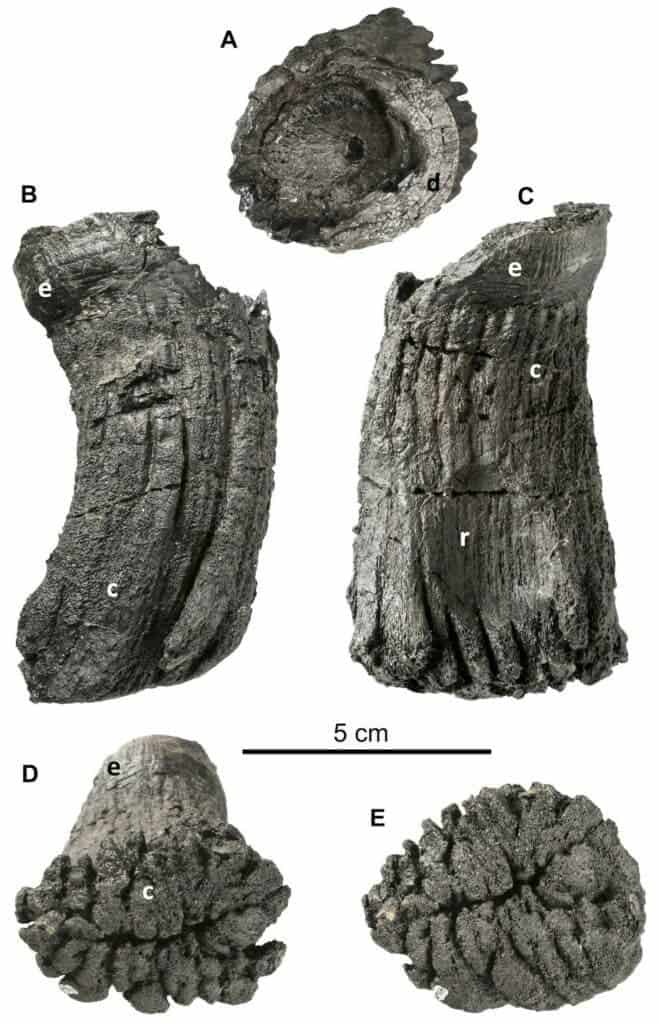The Swiss Alps have yielded unexpected treasure: three fossilized teeth of ichthyosaurus, giant marine reptiles around 205 million years old. The trove includes the largest-ever tooth found for this species.

Around 250 million years ago, during the early Triassic, a new and frightening predator spawned in the ocean: the ichthyosaurus. With an elongated body, small head, but fearsome teeth, these animals were superb hunters that could grow to an impressive 80 metric tons and 20 meters in length — among the largest animals to have ever lived on our planet. Most of them went extinct 200 million years ago although a smaller, dolphin-like subtype of the species survived until 90 million years ago.
Despite this, they have left precious few fossil traces. Exactly why ichthyosaur fossils are so rare “remains a mystery to this day”, says Martin Sander of the University of Bonn, lead author of the paper describing the fossil teeth.
The current specimen was unearthed during geological surveys carried out in the area between 1976 and 1990, at an altitude of 2,800 meters (9,100 feet). However, they have never been analyzed in detail until now; it was dated to 205 million years ago. This area of the Alps used to be part of the waters around the supercontinent Pangea, but the rising of the Alps brought them to their final resting place, high above today’s seafloors.

The finding helps us gain a better understanding of where the ichthyosaurs lived. Previously, it was assumed that they only inhabited the deep ocean. However, the rocks in which these fossils were discovered were most likely the bed of a shallow coastal area. The team says it’s possible that they followed schools of fish into this sea during a hunt.
Two sets of skeletal remains were found in the mountains. One consisted of ten rib fragments and a vertebra; based on their size, they likely belonged to an animal 20 meters long, equivalent to the largest ichthyosaur found to date, a specimen in Canada. The second set consisted of seven vertebrae, likely belonging to an animal 15 meters in length.

“From our point of view, however, the tooth is particularly exciting,” explained Sander. “Because this is huge by ichthyosaur standards: Its root was 60 millimeters (2.4 inches) in diameter—the largest specimen still in a complete skull to date was 20 millimeters and came from an ichthyosaur that was nearly 18 meters long.”
This could suggest that the teeth came from a particularly huge ichthyosaur, the largest ever found; however, the team is pretty confident that instead of an epically-sized individual, we’re likely looking at fossil evidence of an animal with a particularly epic set of teeth lining its jaws. They base this hypothesis on previous research that found gigantism not to be compatible with predators that rely on their teeth to catch prey — that’s why blue whales, the largest predators known, lack teeth.
“Marine predators therefore probably can’t get much bigger than a sperm whale,” Sander said, though more fossils would need to be found to know for certain. “Maybe there are more remains of the giant sea creatures hidden beneath the glaciers,” he said.
The paper “Giant Late Triassic ichthyosaurs from the Kössen Formation of the Swiss Alps and their paleobiological implications” has been published in the Journal of Vertebrate Paleontology.


